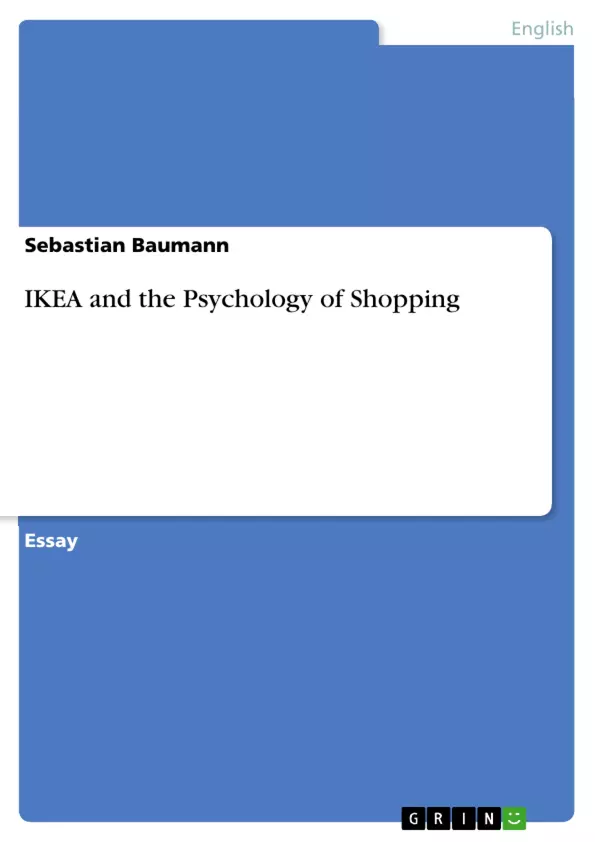Today, the IKEA Group can be considered one of the most successful companies in the world. Apart from generating more than 21.5 billion Euros in 2009, many facts and figures emphasize the organization’s success over the last 69 years. For instance, the IKEA Group now comprises 267 stores in 25 countries, with 1,220 suppliers from all over the world and constantly growing sales – even in times of difficult economic situations (like the late-2000s financial crisis).
But what exactly is the secret of IKEA’s success? How does the Scandinavian home goods company sell so much more to its customers in comparison to its competitors? And why do people even use phrases like “shopping experience” when relating to their time spent in one of IKEA’s retail stores?
In behavioural economics, many experiments have been conducted to find out about psychological factors influencing consumer behaviour and buying decisions. The results of these experiments, which have taken into account aspects like store design, pricing strategies or demographic differences, provide companies with many suggestions for the sake of increasing sales.
In order to analyse IKEA’s success, this essay will first present key aspects concerning the “psychology of shopping”. Afterwards, these findings will be applied to the IKEA Group and specific parts of its retail stores. Moreover, the so-called “IKEA Effect” will be explained in the context of psychological biases.
Inhaltsverzeichnis (Table of Contents)
- 1 INTRODUCTION
- 2 THE PSYCHOLOGY OF SHOPPING
- 3 IKEA
- 3.1 BUSINESS IDEA
- 3.2 STORE DESIGN
- 3.3 THE IKEA EFFECT
- 3.4 FURTHER PSYCHOLOGICAL ASPECTS
- 4 SUMMARY
Zielsetzung und Themenschwerpunkte (Objectives and Key Themes)
This essay aims to analyze the success of the IKEA Group by exploring the psychological factors that influence consumer behaviour and buying decisions. It investigates how IKEA utilizes various aspects of store design, marketing strategies, and product features to maximize sales.
- The psychology of shopping
- IKEA’s business model and philosophy
- The impact of store design on consumer behavior
- The "IKEA Effect" and its role in product valuation
- Further psychological aspects employed by IKEA
Zusammenfassung der Kapitel (Chapter Summaries)
- Chapter 1: Introduction Introduces the IKEA Group, highlighting its growth and success, and raises questions about the key factors contributing to its dominance in the home goods market.
- Chapter 2: The Psychology of Shopping Explores various psychological aspects influencing consumer behavior, including store design, pricing strategies, and demographic differences. It presents key findings from research on the conversion rate, interception rate, waiting time, and the importance of sensory aspects in purchasing decisions.
- Chapter 3: IKEA Examines IKEA's business model, focusing on its wide range of functional and affordable home furnishing products, flat-packing strategy, and commitment to environmental and social responsibility. This chapter then delves into IKEA's unique store design, its role in enhancing the shopping experience, and the underlying psychological effects it employs.
Schlüsselwörter (Keywords)
This study focuses on the psychology of shopping, consumer behavior, IKEA’s business model, store design, the IKEA Effect, self-assembly furniture, and the Gruen Transfer.
- Quote paper
- Sebastian Baumann (Author), 2012, IKEA and the Psychology of Shopping, Munich, GRIN Verlag, https://www.hausarbeiten.de/document/203725


